A dish that does it all.
As a salad, refreshing appetizer, or a light carbohydrate side to complement a fish or other protein, this healthy vegetable and flavor-filled dish adapts to your needs and likings.
But first, what is it? Tabouli (also spelled tabbouleh or tabbouli) is an Eastern Mediterranean dish comprised of a grain mixed with finely chopped cucumbers, tomatoes, parsley, mint, onion, and other ingredients to make for a refreshing food bursting with bright flavors! It’s also a painless way to sneak in some extra vegetables you may not eat often.
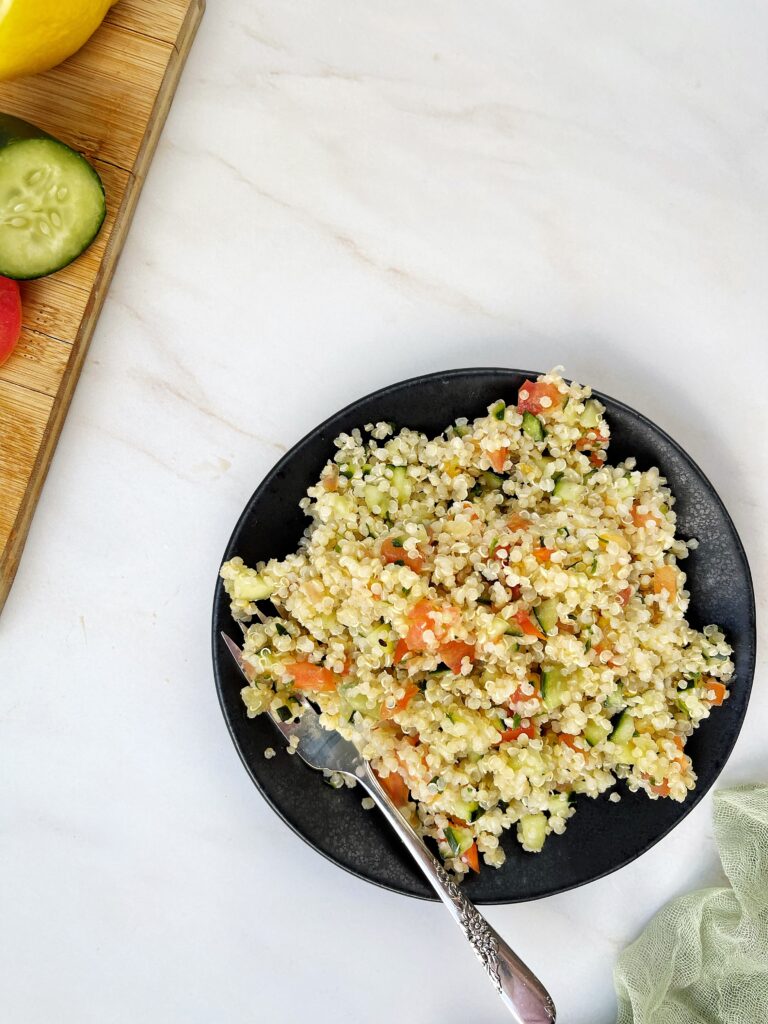
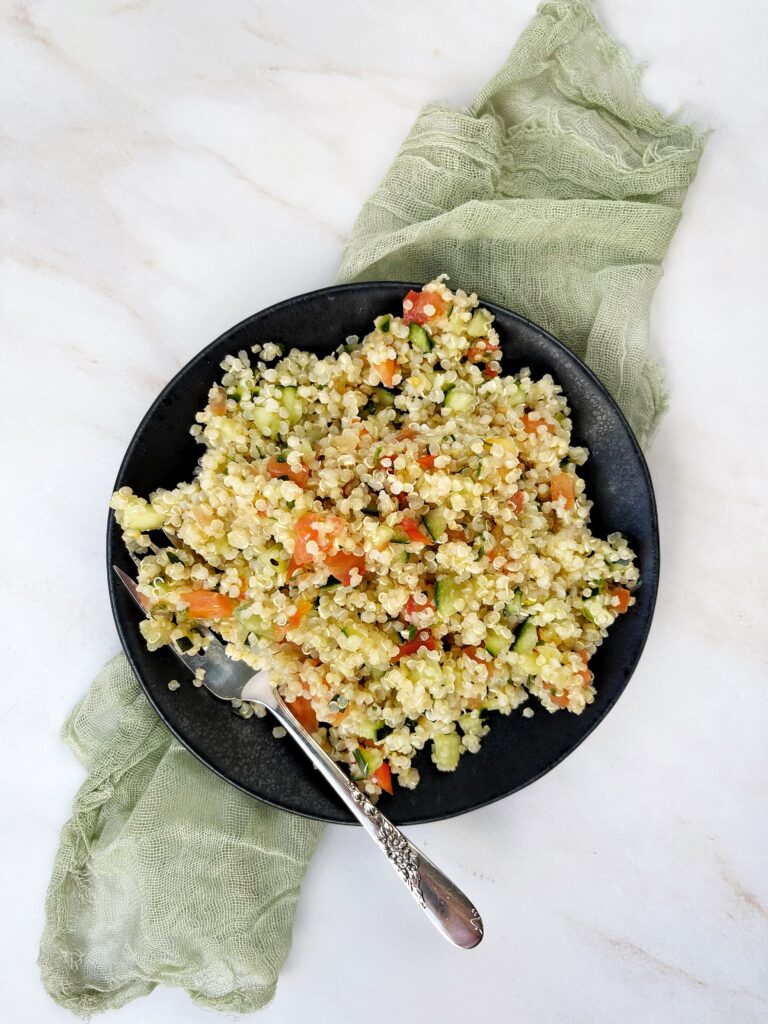
What vegetables are added, the amount, and how small or chunky they’re chopped can all be adjusted based on your personal preferences as well, making this a very flexible recipe that’s even suitable for picky, vegetable avoidant kids and adults alike.
Traditionally, the grain used is bulgar or cracked wheat, but quinoa is used in lieu of that so it’s gluten-free, which celiac and gluten-sensitive friends will appreciate!
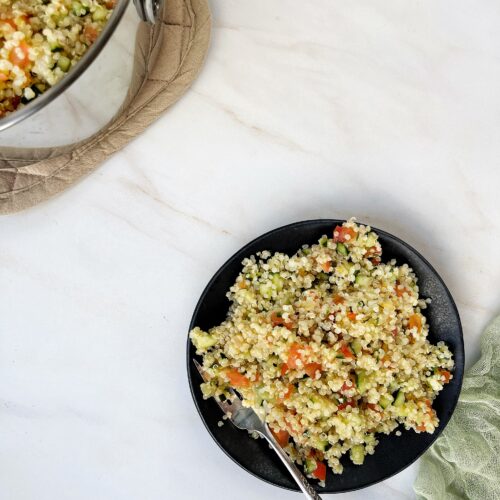
Tabouli Inspired Quinoa
Ingredients
- 1 ½ C quinoa, uncooked*
- 3 C water
- 250-280 g cucumber, diced
- 250-280 g tomato, diced
- 3 stems fresh parsley
- 4 TBSP lemon juice or 1 large lemon, juiced
- 2 TBSP olive oil
- ½ tsp. sea salt
- Pinch of black pepper to taste
- Optional, to taste: fresh scallions (green onions), mint*
Instructions
- Cook the quinoa according to the instructions and until it’s light and fluffy
- As the quinoa is cooking and cooling, finely dice the tomatoes and cucumbers, put them in a bowl, and set aside to sit for at least 10 minutes
- In a food processor or by hand, finely chop the parsley
- Fold the parsley and any of the optional ingredients into the cooked quinoa
- Drain the excess juice that accumulated at the bottom of the bowl of vegetables (so it won’t make the quinoa soggy), then fold into the quinoa
- In a bowl, combine the lemon juice (juice it directly into the bowl if using fresh), oil, sea salt, and black pepper, pour over the quinoa, and mix together
- Tabbouli is served cold, so let it chill in the fridge for at least 1 hour before eating
Notes
- *Quinoa: any color will work, or a tricolor mix — white is the most neutral tasting while red and black have a slightly nuttier, chewier texture and they’re thought to hold up well in cold dishes such as salads
-
*Optional ingredients: conventionally, this is made with both mint and green onions, but as it can be tailored to your taste buds, mine do not have an affinity for any kind of onions nor particularly like the hint of mint in tabouli. However, if you have a taste for either, by all means incorporate them in; just like the other ingredients and herbs, dice to your liking and mix in as instructed at step 4.
- More or less cucumber, tomato, and parsley may be used
-
Store in an airtight container in the fridge
A spring and summer spent in the relentless desert heat of Arizona and Las Vegas brought on this nagging craving for a light and refreshing carb, and that’s what sparked the formation of this recipe! So while there is a little bias, this feels ideal for summer and warmer months. But no matter what time of year you try this quinoa inspired tabouli (or as my husband so eloquently puts it, “taboolinni” LOL), hopefully it becomes a regular in your rotation!
And if you’re more of a visual person, this is actually one of my favorite recipe reels.
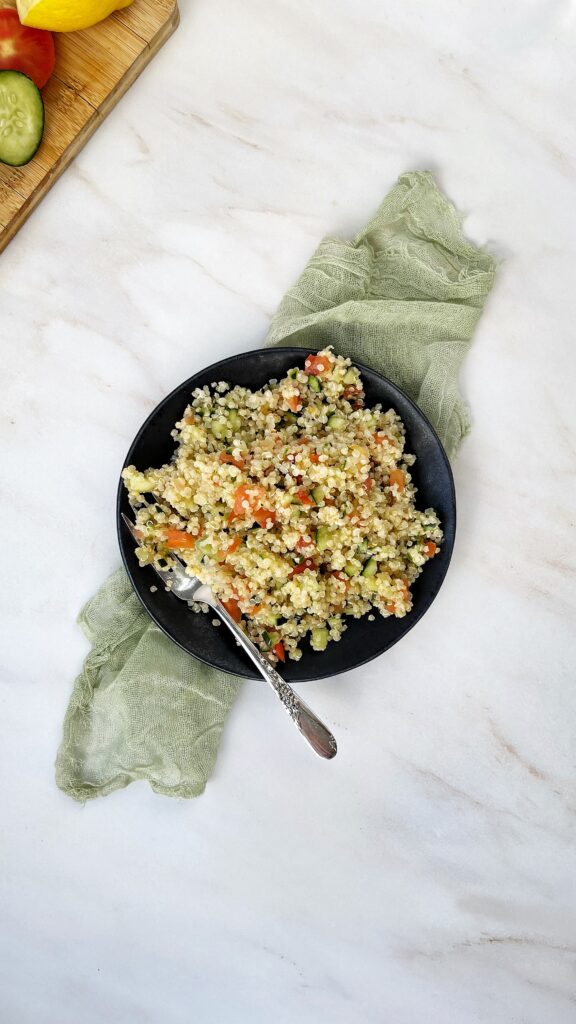
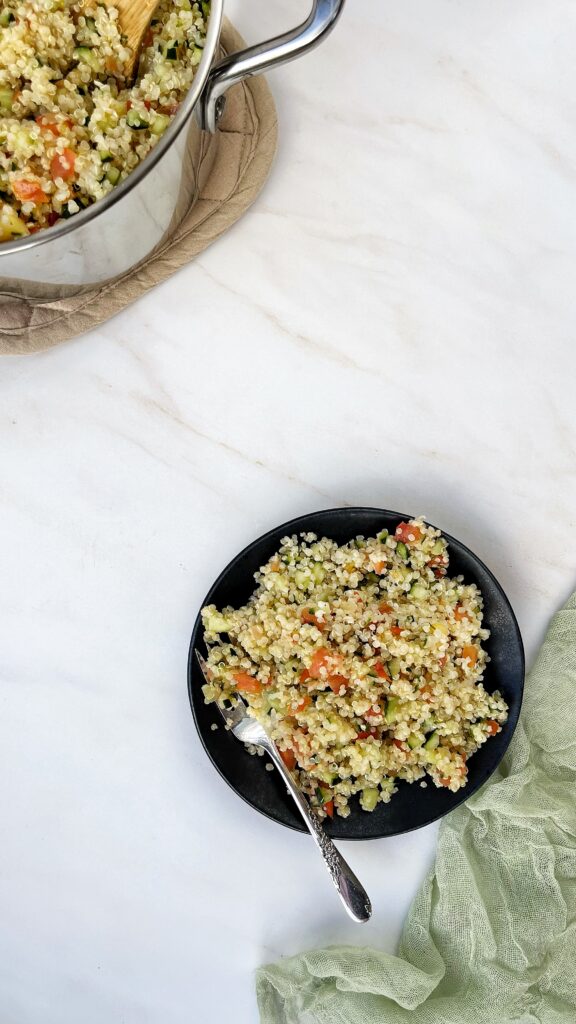
If interested, the macronutrients are below. They are kept separate at the very end of each recipe blog so that this can remain a safe, positive space for all as not everyone wishes to see the nutritional information.
Macros for the whole recipe: 186.9 C | 43.5 F | 40.1 P
The macros will vary in the slightest depending on the weight of the tomatoes, cucumbers, and any optional ingredients used, but the variances are so minimal it’s nothing to worry about.
As for macros per serving, it’s recommended to weigh the entire dish after it’s cooked. Then divide each macro above by the total weight in ounces or grams to determine the macros per ounce or gram. For instance, let’s say the dish weighs 1,100 grams: 186.9 C / 1,100 g = 0.169 grams of carbs per 1 gram; repeat for the fat and protein. Then weigh your serving and multiply each macro per ounce or gram by the weight of your serving to get the macros for your serving (so a 215 gram helping x 0.169 = 35 grams of carbs).
Each portion won’t have the exact same ratio of vegetables in it, so technically speaking this method doesn’t yield pinpoint precise numbers, there’s a minuscule margin of error. But as mentioned earlier, the differences (which mainly come from the vegetables) will be practically microscopic and you can never go wrong with eating more vegetables than you planned or counted for!
The macros for recipes are also available on MyFitnessPal. Simply search the name of the recipe followed by “ – SUNutrition” (so for this recipe, search “Tabouli Inspired Quinoa – SUNutrition”).
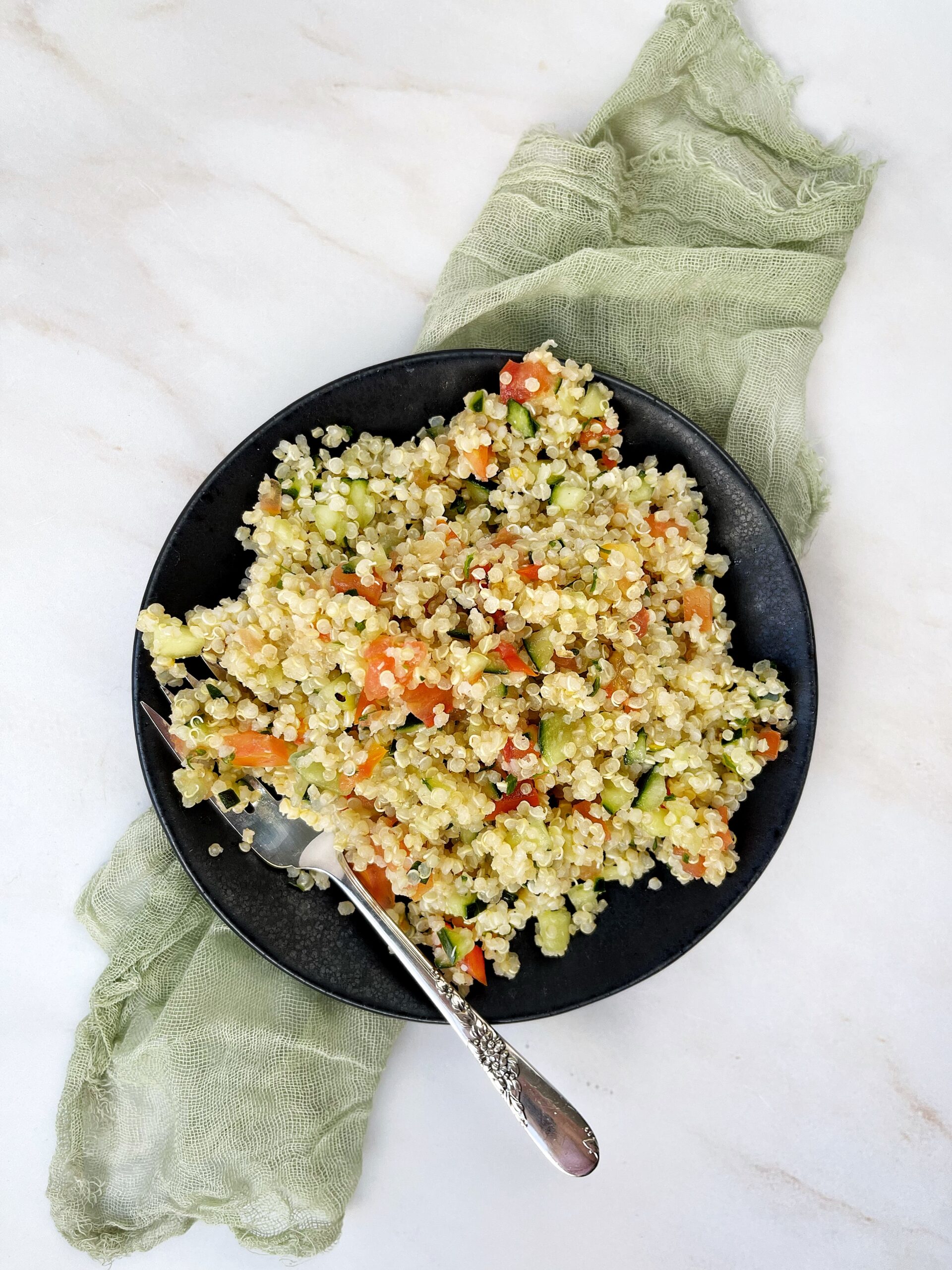
leave a comment